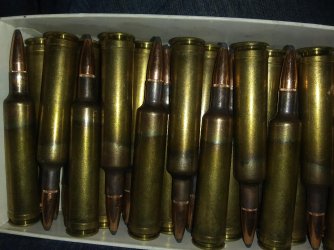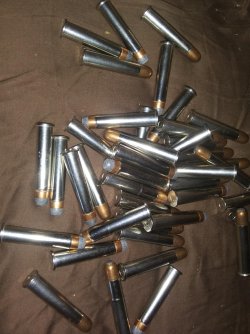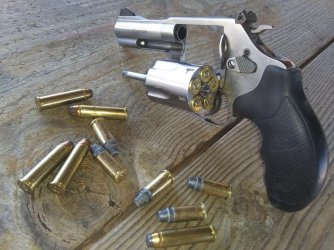Sometimes reloading is just a hobby or related gun event all of it's own that just adds to the hunting or reloading experience. Sometimes it is not related to cost or accuracy at all, just a pleasant event that rounds out the role of guns in your life.
My best buddy (RIP) was a surgeon who left 110 guns when he passed, many high value items. He reloaded large amounts of his hunting guns, 300 Wby, 375 H and H,, 458, 45-70, etc. He even reloaded a 380 Plus P, pushing a 90 grain bullet to over 1,200 fps for use only in the Sig and Walther PP platforms. And many other calibers. He was wealthy and cost just was not an issue. I taught him to shoot and hunt and got him into reloading myself, about 1972 it just became a passion for him.
My hunting club of 16 guys had 4 doctors and dentists in the group, they all reloaded, it was just a hunting guy thing. Interesting, in that group, none of them were about the money. As long as accuracy was decent, they were good to go. There was always some discussion about the latest bullet, the Accubond was one that everybody wanted and not always available on the market, so reloading was a quick way to have them in your gun. Four of us fired the 257 Weatherby, and for a while, those loaded with the Accubond in factory ammo were $90 or more for 20, shipped and taxed over $5 each. To reload them was simple and about 90 cents each. I still have a few, Are they better than any cup and core bullet on game? I dunno, I have killed over a dozen with the 257 and the factory ammo, which is loaded by Norma with the Hornady 100 grain standard bullet, all were big deer and all were one shot out to 403 yards.
I just enjoy cranking out a pile of ammo equal to factory ammo knowing it will shoot 1/2 inch groups. The fact that it is cheap is just fine too. Here is a pic of some of my stash, 117 grain bullets that will shoot under 1/2 inch in that gun. I did nothing special, just basic reloading methods, and of course, I weigh the powder for each round and I did anneal about 100 rounds in that batch.

Just saying, it is not always about cost or accuracy. And the second picture is a mix of my 45-70 with some 405 grain and some 350 grain, in nickel cases, look nice, huh?

And this last picture of the Smith and Wesson model 60 shows two types of ammo. The big ones are Federal factory 180 grain ammo, a thumper in that little gun. The short ones were made for a grand daughter for practice in her small J frame, Intended to be lightly loaded and soft on recoil, similar to a 380. The goal was to improve her shooting of the tiny gun but without the recoil of the 38 or 38 Plus P. Simple solution. I just ordered 100 38 Short Colt brass from Starline. She sees them and she immediately knows they are light recoil and has less concern.
Competition shooters in the 357 class handguns, load the 38 Short Colt to 357 pressures, the cases are the same per Starline, the short cases eject quicker for reloads, which matters in competition. So if you do that you must keep them separate from all other ammo and know what you doing. They would be fine in this model 60 J Frame, but not in any 38 rated J Frame if they are loaded to 357 pressures.
Sometimes reloading gives you the options like that. And it is not about cost or accuracy.




